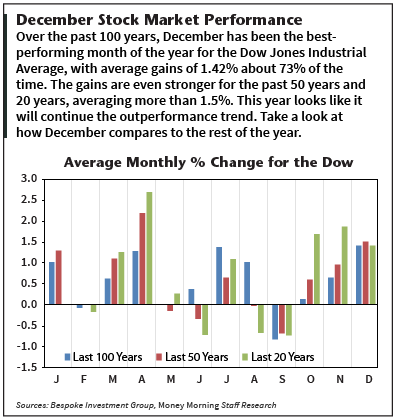
For the last year, you’ve been able to produce cars fast enough, and efficiently enough, to meet demand and fill all orders. However, your company is introducing a new design next year, and it anticipate large orders. You realize that you’ll need to hire additional employees to create more output, but how many? You can figure this out by determining the marginal product of labor.
Marginal product can be defined as an increase in total production of a factor of production that is capital, labor, land, etc., resulting from the increase in one unit in the factor of production. One of the main objectives of any business is to increase productivity and profit. Calculating the marginal product of labor can help employers make major decisions regarding the number of employees and the productivity level of the business or company to maximize profit. And if you are interested in learning this concept, then you are in the right place. Measuring the marginal product of labor for each new employee hired will illustrate the law of diminishing marginal productivity. The MPL number is significant because it helps businesses to understand how an additional employee will impact the productivity of its workforce, whether it be negatively or positively.
Let’s take an example to understand the calculation of Marginal Product in a better manner.
Factors Affecting Marginal Product Output.
Let us take the example of a company, ERT Ltd., which is an automotive parts manufacturing company. The company’s senior management wants to study the impact of the increase in man hours on the overall production output. During a recent experiment, the daily man hours was increased from how to calculate marginal product 7,200 to 8,000, increasing daily production output from 15,000 pieces to 17,000 pieces. Calculator the marginal product of one man-hour based on the given information. To improve the marginal product output, it is best to make minor adjustments to one element of production at a time.

For example, from the table above, the company posted increasing returns until the number of workers was three. The same concept applies to other productivity inputs, such as machines and other equipment. A donut shop, for instance, measures the number of donuts produced while taking into consideration fluctuations in production input.
Relevance and Use of Marginal Product Formula
For that matter, the additional output comes about with the injection of new capital in a business. The metric is synonymous with startups that rely on private investments to maintain operations. It has been noted that when the input is added in the initial phase, it helps to increase production. However, with a gradual increase of the same input, when all other inputs are kept constant, the output per unit goes on decreasing. After a certain point, this level of production may get zero and even negative.
Remington’s New Heavy Hitter: 360 Buckhammer An Official … – American Rifleman
Remington’s New Heavy Hitter: 360 Buckhammer An Official ….
Posted: Tue, 08 Aug 2023 12:53:01 GMT [source]
Marginal product of labor is a measurement of a change in output when additional labor is added. To calculate marginal product of labor you simply divide the change in total product by the change in labor. Companies need to calculate this in order to ensure they have enough workers to meet production demands, which results in overall healthier and more profitable businesses. It is important to understand the concept of marginal product because it is used as one of the driving factors of the level of production. In fact, there are cases where marginal productivity can become detrimental enough to reduce the overall production level by adding a new variable unit.
What is Marginal Product of Labor?
A marginal product is the ratio of the change in output with a corresponding change in input of a good or service. For example, how the output would change with a doubling of the input. Average product measures the average output of products for each unit variable input. Therefore, it shows the number of inputs required to produce a certain amount of product output. Before this point, the firm can still increase the total output by adding more inputs.
Marginal product is calculated by first isolating various changes in a business, which can be changes in capital, labor, or raw materials. Once the isolation is completed, one must be able to track how changes in the production input are affecting the overall production process as well as output. A positive marginal product comes about when an increase in production inputs results in an overall increase in volume output. For this to happen, then businesses must invest more on capital, land, and labor, which are the main factors of production. The concepts of total product, average product, and marginal products are important because they help in increasing production levels to the maximum. The concepts of total product, average product, and marginal product are helpful in determining the optimum productivity from a production process.
- In other words, if the 2 new employees were able to produce 2.5 cars, then all of your car factory employees would be able to meet the change in demand to produce 15 cars instead of 10 a month.
- Another term for decreasing marginal product is diminishing the marginal product, decreasing marginal return.
- Marginal product is the ratio of change between an input (usually labor or capital) and an output (usually units produced).
- The concept of “Marginal Product of Labor” indicates the change in the production level of a business as a result of a change in the workforce.
The diminishing marginal productivity states that the slight increase in input in a production cycle advances production marginally and may even become negative after a certain point. Almost every business and company reaches a point when hiring even one more employee will not change the productivity level at all. Furthermore, in some cases, this can lead to an overall decrease in productivity. Ultimately, there are just too many employees trying to do only a handful of tasks and as a result, productivity suffers. This article will teach you what the marginal product of labor is and show you the formula for calculating it. This article will also explain to you the steps for calculating the marginal product of labor along with examples to help you learn the concept clearly.
Average Product
Marginal product is referred to as the change in output for a unit change in the input of one variable when other variables are kept unchanged. Moreover, the relation between total product and the factors of production is linear, but once the limit of production is reached, limiting factors start to set in. Economists use it to answer why increasing the stock of capital (to increase the capital-labor ratio) does not necessarily sustain long-term economic growth. Another term for decreasing marginal product is diminishing the marginal product, decreasing marginal return. In the financial world, marginal product is simply the amount of money or wealth accrued, as firms in this sector do not engage in the production of goods and services.
Understanding the Law of Diminishing Returns – Entrepreneur
Understanding the Law of Diminishing Returns.
Posted: Fri, 07 Apr 2023 07:00:00 GMT [source]
Similarly, a cement company would measure the number of cubic yards of cement produced depending on changes in input, which could be in the form of labor or raw materials. For example, when an excess of raw materials is added to the production process, it may reduce the output instead of increasing it. The law of diminishing marginal utility is applicable to the production of all types mentioned above. So, for each additional input, the change in output is 5, which is the marginal product. The average product shows the production output per unit input of the variable. Now, find out the marginal product of labor of BizKit Ltd. for the newly hired workforce and compare the productivity level of the new workforce with the old one.
The marginal product calculates the total change in output for an additional amount of input. The idea behind calculating marginal product is to isolate each input and check the output. In other words, the total product is an output for a variable input that can change but when the process maintains all other inputs unchanged. In this article, I’ve briefly explained the concept of marginal product of labor, showed you the formula and discussed how to calculate it with several practical examples. After reading this, hopefully, you have a clear idea about how you can calculate it and apply it in real life. Let’s consider the case of a hypothetical company “BizKit Ltd.” for this example.
It is a measure of what the size of the workforce in a company should be in order to maximize its profits and productivity. Well, the marginal product of labor is 2.5, which is the quota that the new employees would need to meet. In other words, if the 2 new employees were able to produce 2.5 cars, then all of your car factory employees would be able to meet the change in demand to produce 15 cars instead of 10 a month.
This can reduce the wastage of resources and can let producers use the optimum amount of raw materials. So, in this example, we can see that the marginal product of labor of the new employees is 3,200 units per labor. And this has resulted in an increase in the productivity level from 2,000 units per labor in the fiscal year 2019 to 2,400 units per labor in the fiscal year 2020. It helps companies and businesses decide whether hiring additional employees will benefit the business/company or adding extra manpower is not worth the cost. Keep in mind, MPL (Marginal Product of Labor) is not always proportional to the output directly produced by the added employees. In this article, we will explain how to calculate marginal product but before that, lets define marginal product.

While the limiting process of additional productivity is applicable for enhanced production, knowing the limiting point helps to avoid wastage and get maximum productivity. Total product calculation helps firms to understand how much input can be obtained by using a single input while keeping other inputs constant. Therefore, they can measure the required input to get the desired amount of output. They cannot only organize their production levels depending on the total output, but they can also use the optimal amount of the required input when needed.
Marginal Product of Labor Examples
Therefore, ERT Ltd.’s marginal product is 2.5 pieces per man hour, which means adding each unit of man hour will increase the daily production output by 2.5 pieces. Economists are usually interested to understand the relationship between inputs and outputs to check the production of goods. Sometimes, inputs may be changed while in some cases some inputs may be kept constant to check the various output levels. Now, find out the marginal product of labor (MPL) for this company at the end of each month. Although coming from microeconomic concepts, marginal returns are also an important concept when you study macroeconomics. One of them is explaining the economic production function to estimate long-run aggregate supply (potential GDP).
In some cases, an increase in input might result in a decrease in total output. If that was to happen, then a business is said to have plunged into negative marginal productivity. A car company can only continue to produce more cars if there is strong demand in the market. If there is no demand in the market and the company continues to make cars, it is likely to plunge into negative marginal product. The formula for calculating the marginal product of labor (MPL) can be derived by dividing the change in production output by the change in input labor.

